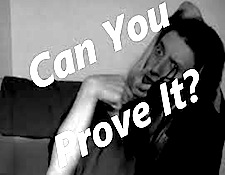It’s the time of year for saving money!

Although I write for several “subjectivist” publications and
websites I often come across statements online about how a component sounds or
outperforms another component that make my eyebrows go up. Most of the time the
issue is that a poster makes a statement without any examples or system context
for their findings.
Given that I do believe that components can and do sound
different, what’s my beef with other audiophiles posting opinions on sound?
Simple, I want enough information and background so that I, too, can accept
that what a poster has said they’ve heard is true. Just like any reader, I need
to feel that the poster has enough knowledge to make a valid conclusion. I need
to enough factual information so that I can trust them.
Now, imagine how it must be for someone who is a firm
believer in “objective” hifi. Since most opinions are subjective, it must drive
anyone who longs for “measurable” differences absolutely nuts. Without any way
to quantify or “prove” opinions, it all becomes an exercise in likability – if
YOU like it, it’s good…and that’s perfectly fine as long as opinions don’t
somehow morph into “facts.”

For me to trust an opinion it needs to include two vital
pieces of information. First I need to know what the poster’s source components
were – I’m far more likely to accept an opinion when I know the quality of the
input. Secondly I need to know what music was used when forming opinions. Were
the musical tracks used high, low, or medium resolution? Were they chosen from
red book CDs, LPs, or MP3s? Often I see opinions on Head-Fi from posters using
streamed sources or 128 PBS MP3 files. For me this is an instant fail because
the sonic flaws they’re hearing may just a likely have been caused by their
software, not their hardware.
So, what’s the takeaway from this blog? Simple, if you want
your sonic opinions to be taken seriously by other audiophiles, always include
what you used as a source and what’s in your signal chain. I want to believe
you, as do other readers, but we all need enough information so that we can
make that leap of faith…





